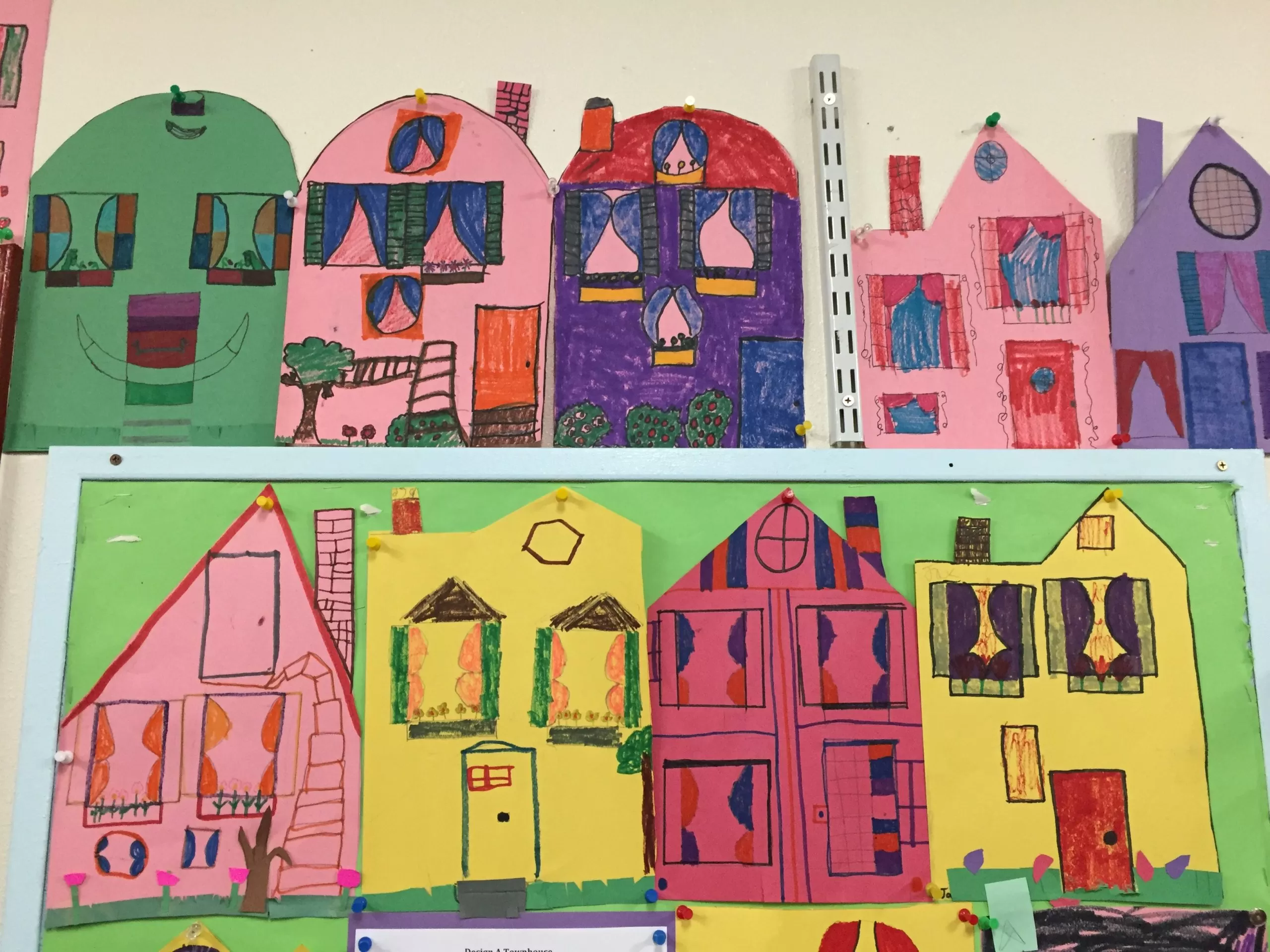I enjoy doing this project most years with my third graders. As I prepare to get it started in the next week or two, I thought it made sense to reissue this blog that I published two years ago. I think you will see why I look forward to it each year! – Dana
It’s a Project!
As we approach the end of the school year, we look back on all the experiences we have had together exploring and mastering many skills and concepts. While we still have time, I search for new ways to apply that learning in order to deepen understanding and connect the knowledge so it sticks, and I remember that John Dewey once said, “Give the pupils something to do, not something to learn; and the doing is of such a nature as to demand thinking; learning naturally results.” Thus, I introduce a project to not only meet learning goals but also to add opportunities for deep, creative thinking and real world application to the math classroom.
Designing townhouses can be a creative way to connect many math concepts. To introduce this project, I show students real examples of real architectural plans. They begin by drawing the townhouse front according to guidelines designed to reinforce fraction concepts and precise measurement skills because the house fonts must all fit next to each other to make a townhouse community. Next, the young architects design the floor plan of their house using a grid. One house included a secret laboratory, a bowling alley, and a swimming pool; they clearly have a lot of fun designing their dream homes. Each room is labeled with its purpose, dimensions, and type of flooring (wood, tile, carpet, or concrete). Even the more mathematically intense portion is engaging as students as they find the area of each room and the cost to put in the flooring.

Students show pride in precise and innovative work and delight in applying skills in a meaningful way. As John Holt says, “Learning is not the product of teaching. Learning is the product of the activity of the learner.” Bixby learners worked through a lot of problems in designing their houses; the experience seemed to result in not only deepening mathematical skills but also in persistence, attention to detail, and self-evaluation. Projects can certainly be a fun and efficient way to meet a lot of learning goals.



